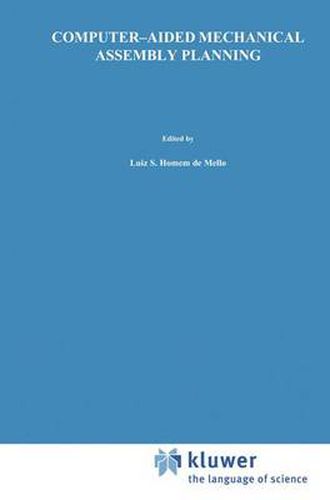Readings Newsletter
Become a Readings Member to make your shopping experience even easier.
Sign in or sign up for free!
You’re not far away from qualifying for FREE standard shipping within Australia
You’ve qualified for FREE standard shipping within Australia
The cart is loading…






This title is printed to order. This book may have been self-published. If so, we cannot guarantee the quality of the content. In the main most books will have gone through the editing process however some may not. We therefore suggest that you be aware of this before ordering this book. If in doubt check either the author or publisher’s details as we are unable to accept any returns unless they are faulty. Please contact us if you have any questions.
Some twenty years have elapsed since the first attempts at planning were made by researchers in artificial intelligence. These early programs concentrated on the development of plans for the solution of puzzles or toy problems, like the rearrangement of stacks of blocks. These early programs provided the foundation for the work described in this book, the automatic generation of plans for industrial assembly. As one reads about the complex and sophisticated planners in the current gen eration, it is important to keep in mind that they are addressing real-world problems. Although these systems may become the toy systems of tomor row, they are providing a solid foundation for future, more general and more advanced planning tools. As demonstrated by the papers in this book, the field of computer-aided mechanical assembly planning is maturing. It now may include: * geometric descriptions of parts extracted from or compatible with CAD programs; * constraints related to part interference and the use of tools; * fixtures and jigs required for the assembly; * the nature of connectors, matings and other relations between parts; * number of turnovers required during the assembly; * handling and gripping requirements for various parts; * automatic identification of subassemblies. This is not an exhaustive list, but it serves to illustrate the complexity of some of the issues which are discussed in this book. Such issues must be considered in the design of the modern planners, as they produce desirable assembly sequences and precedence relations for assembly.
$9.00 standard shipping within Australia
FREE standard shipping within Australia for orders over $100.00
Express & International shipping calculated at checkout
This title is printed to order. This book may have been self-published. If so, we cannot guarantee the quality of the content. In the main most books will have gone through the editing process however some may not. We therefore suggest that you be aware of this before ordering this book. If in doubt check either the author or publisher’s details as we are unable to accept any returns unless they are faulty. Please contact us if you have any questions.
Some twenty years have elapsed since the first attempts at planning were made by researchers in artificial intelligence. These early programs concentrated on the development of plans for the solution of puzzles or toy problems, like the rearrangement of stacks of blocks. These early programs provided the foundation for the work described in this book, the automatic generation of plans for industrial assembly. As one reads about the complex and sophisticated planners in the current gen eration, it is important to keep in mind that they are addressing real-world problems. Although these systems may become the toy systems of tomor row, they are providing a solid foundation for future, more general and more advanced planning tools. As demonstrated by the papers in this book, the field of computer-aided mechanical assembly planning is maturing. It now may include: * geometric descriptions of parts extracted from or compatible with CAD programs; * constraints related to part interference and the use of tools; * fixtures and jigs required for the assembly; * the nature of connectors, matings and other relations between parts; * number of turnovers required during the assembly; * handling and gripping requirements for various parts; * automatic identification of subassemblies. This is not an exhaustive list, but it serves to illustrate the complexity of some of the issues which are discussed in this book. Such issues must be considered in the design of the modern planners, as they produce desirable assembly sequences and precedence relations for assembly.